Fall 2023 AEM Colloquium Series
About
The Department of Aerospace Engineering and Mechanics holds its colloquium Fridays from 2:30 pm to 3:30 pm. Unless otherwise indicated, all lectures will take place in Akerman 209 this semester. Please note some events may be subject to change.
Seminars will not be held on the following dates:
- 11/24/23
- 12/15/23
Fall 2023
Professor Perry Leo, September 8, 2:30pm
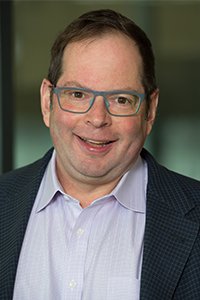
Aerospace Engineering and Mechanics - University of Minnesota
About: The first meeting of the Fall 2023 Seminar Series (AEM 8000) will be a welcome speech from our department head, Professor Perry Leo.
Bio: Professor Leo studies phase transformation, pattern formation and material properties in complex, multiphase solids. Leo and his group use theoretical and numerical analysis to couple formation of microstructure in these materials to their properties, such as strength, fracture and fatigue resistance, and electrical and magnetic response. Leo’s work encompasses a range of materials, including composite materials, biological materials, metal alloys and liquid crystals.
Faculty Research: Solids, September 15, 2:30pm
Solid Mechanics and Materials (Aerospace Structures and Advanced Materials)
This Friday's seminar will give students a chance to get to know our Solid Mechanics Faculty!
Refreshments to follow in Akerman 211
Faculty Research: Systems, September 22, 2:30pm
Introduction to Aerospace Systems Faculty
This Friday's seminar will give students a chance to get to know our Aerospace Systems Faculty!
*Refreshments to follow in Akerman 211
Professor Nadia Lapusta, September 29
Seismological Laboratory - Caltech
***CANCELLED***
This lecture will take place from 3-4 p.m. in 210 Civil Engineering.

Title: Fluid effects in frictional faulting
Abstract: The main effect of fluids on frictional faulting is typically expressed through the concept of effective normal stress equal to the fault-normal stress minus the pore fluid pressure. The fault frictional resistance is then given by the product of the effective normal stress and fault friction coefficient. Within this framework, several processes can spontaneously evolve the pore fluid pressure, including thermal pressurization of fluids induced by rapid shear heating, inelastic dilatancy/compaction of the shearing layer, and poroelastic effects that couple pore fluid pressure with bulk deformation. We will focus on two examples illustrating the potential dominance of these effects in earthquake source processes. First, we will show that dynamic weakening due to thermal pressurization may explain the low-heat, low-stress operation of mature continental plate-boundary faults, with the corresponding models reproducing observations of radiated energy and the relative paucity of small earthquake events on such faults. Second, we will discuss how the combined effects of poroelasticity and dilatancy significantly affect the response of a fault to fluid injection. Finally, we will show some recent experimental evidence that faults with the same effective stress display different patterns of slip, likely due to changes in friction properties, raising the possibility that the effective stress concept may not be universally applicable. These examples highlight the need to consider fluid effects in modeling sub-surface shear failure as well as the importance of determining realistic thermo-hydro-mechanical properties of fault zones.
Faculty Research: Fluids, October 6, 2:30pm
Friday's seminar will give students a chance to get to know our Aerospace Fluids Faculty!
*Refreshments to follow in Akerman 211
Vikas Srivastava, October 13, 2:30pm
Assistant Professor of Engineering - Brown University
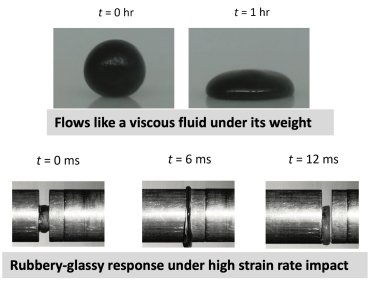
Title: Experiments and model for dynamically crosslinked shear rate stiffening soft polymers
Abstract: Dynamically crosslinked polymers are strongly rate-dependent materials that are gaining significant interest due to their potential energy absorption and self-healing abilities, and have the promise to be used for sensing, actuation, and lightweight body or structural protection. These entangled soft polymers change from viscous- fluid-like to rubbery and glassy-solid states during high-rate deformations due to the microstructural mechanics of reversible, dynamic crosslinks. Currently, there is a lack of experimental data and physics-based constitutive models for the large strain material response of these polymers over a broad strain rate range. I will present our theoretical framework and a microstructural physics-motivated constitutive model that describes the nonlinear large strain elastic-viscoplastic material response, rate-dependent stiffening and material state transformation of reversible dynamically crosslinked soft polymers over seven decades of strain rates. We have experimentally characterized the nonlinear large deformation response of a dynamically crosslinked soft polymer polyborosiloxane over a strain rate range of 10 -3 to 10 4 /s. The polymer stiffness changes by four orders of magnitudes over this strain rate range. The proposed continuum model can predict the large deformation highly rate-dependent response of polyborosiloxane and provides insight into different dynamic crosslinking mechanisms. I will end the talk with brief notes about our recent works that integrate neural networks with mechanics to solve critical structural integrity problems, including convolutional neural networks (CNN) for accurate hidden crack quantification and (ii) physics-informed neural networks (PINN) for finite strainplasticity problems.
Speaker Bio: Dr. Srivastava is the Howard M. Reisman Assistant Professor of Engineering at Brown University. Dr.
Srivastava received his Ph.D. in Mechanical Engineering from M.I.T. in 2010. Before this, he earned his M.S.
in Mechanical Engineering and Applied Mechanics from the University of Rhode Island and his B.Tech. in
Mechanical Engineering from the Indian Institute of Technology, Kanpur. Following his Ph.D., he worked at
ExxonMobil Research organizations in various roles, including Senior Technical Professional Advisor in
Mechanics, Marine and Mechanics Team Lead, and Worldwide Deepwater Drilling Coordinator. Dr. Srivastava
joined Brown University in the fall of 2018. Dr. Srivastava’s research focuses on developing and applying
continuum-scale solid mechanics theories, models, and experiments for engineering materials, structures, and
biomedical systems.
Jason Rife, October 20, 2:30pm
Professor, Mechanical Engineering & Electrical and Computer Engineering - Tufts University
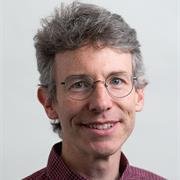
Title: Safe GPS and LIDAR Navigation for Self-Driving Cars
ABSTRACT: This talk discusses current research on assuring safety for GPS and LIDAR measurements used in urban driving applications. New methods will be discussed to ensure that sensor performance supports safe automated lane-keeping. We will consider several factors that impact error bounding, including sensor accuracy, error time correlation, and the vehicle’s control law. To support rigorous error bounding, an approach will be described to model errors when scan-matching LIDAR point clouds, in a manner that automatically accounts for measurement noise and scene geometry.
Speaker Bio: Jason Rife is Professor and Chair of Mechanical Engineering at Tufts University. He directs the
Automation Safety and Robotics Laboratory (ASAR), which applies theory and experiment to
characterize robots and autonomous vehicle systems for safety-of-life applications. He received his B.S.
in Mechanical and Aerospace Engineering from Cornell University and his M.S. and Ph.D. degrees in
Mechanical Engineering from Stanford University.
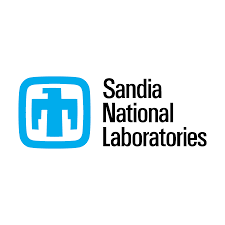
Justin Smith, October 27, 2:30pm
Sandia National Laboratories
Title: Aerosciences Research & Development at Sandia National Labs
Abstract: Sandia’s Aerosciences Department conducts research and development in aerodynamics, aerothermodynamics, compressible fluid mechanics, and flight dynamics. Our projects span the range from subsonic through hypersonic and involve systems ranging from aircraft-released ordinance to reentry systems and rocket systems. Our current research focus includes projects in turbulence modeling, thermal protection system ablation response, boundary layer transition, and experimental methods for hypersonic ground and flight testing. In this seminar, I give a brief introduction to Sandia’s Engineering Sciences Center and the Aerosciences Department. I then discuss some of the research efforts going on in the department and provide a deep dive into our Grand Challenge Laboratory Directed Research and Development (LDRD) effort on Enabling Rapid Flight Integration of Advanced Hypersonic Thermal Protection System Materials.
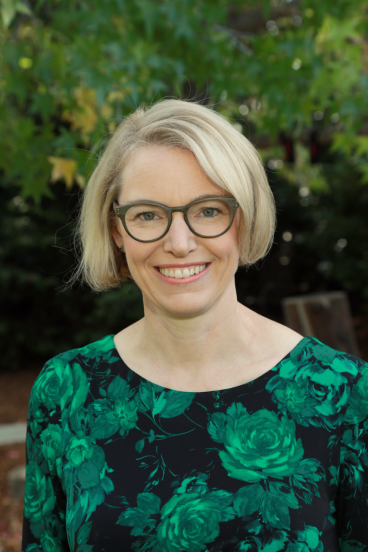
Alison Marsden, November 10, 2:30pm
Professor, Pediatrics & Cardiology - Stanford University
Title: Multi-physics modeling of flow and cardiac function in pediatric cardiology
Abstract: Congenital heart disease affects 1 in 100 infants and is the leading cause of infant mortality in the US. Among the most severe forms of congenital heart disease is single ventricle physiology, in which the heart develops with only one functional pumping chamber. These patients typically undergo three open chest surgeries, culminating in the Fontan procedure at three years of age. Prior work has extensively explored the use of multiscale models, combining hemodynamics with lumped parameter models of single ventricle physiology to assess surgical methods for all three stages of single ventricle palliation. Here, we present our recent work, which extends traditional models of Fontan hemodynamics to include multiple physical processes and cardiac function. We will discuss our recent progress towards: 1) growth and remodeling of tissue-engineered vascular grafts in the Fontan circulation, including a finite element framework for fluid-solid growth simulations, and 2) model-driven design of a bioprinted pulsatile conduit to provide a power source for Fontan physiology. Recent methodological advances for generation of vascular networks using optimization will also be described. Finally, we discuss progress and challenges of developing whole heart models incorporating machine learning for image segmentation, fluid mechanics, active contraction, electrophysiology and valves. We will describe open source software and data resources available via the SimVascular project and the Vascular Model Repository.
Speaker Bio: Alison Marsden is the Douglass M. and Nola Leishman Professor of Cardiovascular Disease in the
Departments of Pediatrics, Bioengineering, and, by courtesy, Mechanical Engineering at Stanford University.
She is a member of the Institute for Mathematical and Computational Engineering. From 2007-2015 she was a
faculty member in Mechanical and Aerospace Engineering at UCSD. She graduated with a BSE degree in
Mechanical Engineering from Princeton University in 1998, and a PhD in Mechanical Engineering from
Stanford in 2005. She was a postdoctoral fellow at Stanford University in Bioengineering from 2005-07. She
was the recipient of a Burroughs Wellcome Fund Career Award at the Scientific Interface in 2007, an NSF
CAREER award in 2011. She was elected fellow of AIMBE and SIAM in 2018, the APS DFD in 2020, and
BMES in 2021. She is the 2023 recipient of the Van C. Mow medal from the ASME Bioengineering Division.
She has published over 160 journal articles and holds leadership roles in the ASME and APS scientific
societies. Her research focuses on the development of numerical methods for cardiovascular biomechanics
and application of engineering methods to impact patient care in cardiovascular surgery and congenital heart
disease.
Daniel Casem, Ph.D., November 17, 2:30pm
US Army Research Laboratory, Aberdeen Proving Ground, Maryland
Title: Miniature Kolsky Bars – Methods & Applications
Abstract: Miniature Kolsky bars, or split Hopkinson pressure bars, are used primarily to obtain strain-rates higher than those that can be achieved with conventional bars. This has long been recognized, and there is no clear distinction between these two categories since the fundamental assumptions behind their operation are the same. In practice, miniature bars are generally considered to be any diameter 3 mm or less.
Over the past decade, the author and coworkers have developed a number of miniature bars, with diameters as small as 100 µm, to obtain strain-rates as high as 1 M/s. This talk documents much of this work as well as the recent work of others. It is intended to highlight the caveats associated with miniature Kolsky bar data and to provide guidance for those interested in developing their own small-scale systems. The Kolsky bar is a versatile technique and has been used in many modified versions for specific applications. Many of these could be “miniaturized” to study higher rate effects. Thus, there is a large potential for the application of miniature bar methods, which can further benefit from current developments in high-speed optical instrumentation, small-scale machining, and micro-mechanical testing to expand the state-of-the-art.
Kyle Hanquist, December 1, 2:30pm

Assistant Professor of Aerospace and Mechanical Engineering - University of Arizona
Title: Investigating high-enthalpy hypersonic effects using modeling and simulation
Abstract: During typical hypersonic flight conditions, different energy modes (e.g., vibrational, electronic) can be excited and the flow can be reactive. Due to the time scales involved, each of these, together called thermochemical, can be in nonequilibrium. Replicating these flight conditions, especially enthalpy, is challenging in experimental facilities, motivating computational investigations. The hypersonic flight regime involves an extremely high level of energy, so a small error in the modeling of the energy processes can result in drastic changes in the vehicle design, which motivates the importance of understanding these mechanisms. This talk will present recent progress in investigating high-enthalpy, reactive flows using two open-source computational codes: Su2-NEMO and Mutation++. Applications investigated include experimental comparisons, aero-optics, unsteady flows, and thermal management.
Philip Flater, December 8, 2:30pm
US Air Force
***CANCELLED***